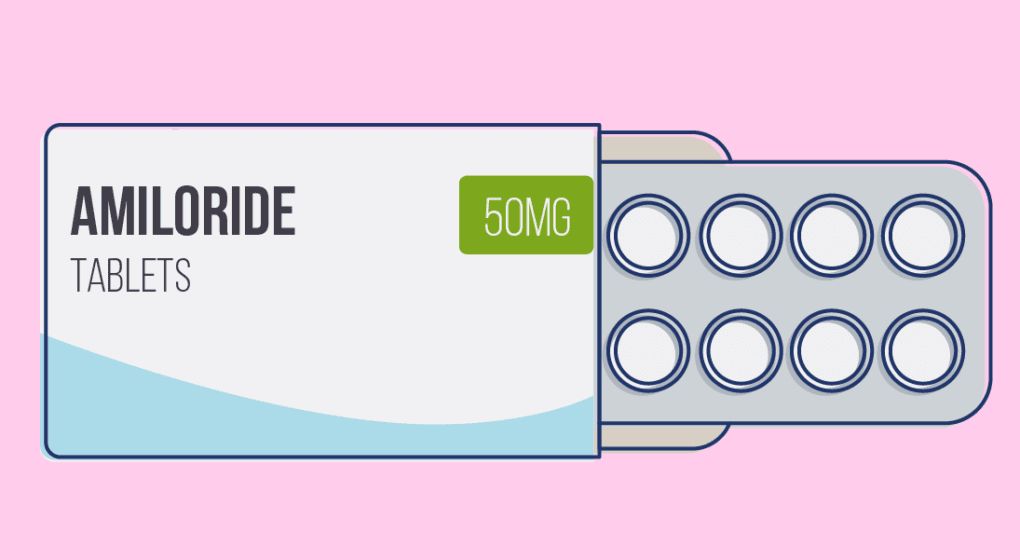
Understanding gene-environment interactions leads to possible preventive treatment
An inhaled form of a high blood pressure medication has potential to treat certain types of anxiety as well as pain, according to a new study by the Centre for Addiction and Mental Health (CAMH).
Anxiety disorders are usually treated with different types of medications, such as antidepressants, and psychotherapy. Amiloride is a medication offering a new approach, as a short-acting nasal spray that could be used to prevent an anxiety attack.
“Inhaled amiloride may prove to have benefits for panic disorder, which is typically characterized by spells of shortness of breath and fear, when people feel anxiety levels rising,” says lead author Dr. Marco Battaglia, Associate Chief of Child and Youth Psychiatry and Clinician Scientist in the Campbell Family Mental Health Research Institute at CAMH.
The study was based on understanding the key physiological changes in brain functioning that are linked to anxiety and pain sensitivity. The researchers then tested a molecule, amiloride, which targets this functioning.
Amiloride was inhaled so that it could immediately access the brain. The study showed that it reduced the physical respiratory signs of anxiety and pain in a preclinical model of illness. This therapeutic effect didn’t occur when amiloride was administered in the body, as it didn’t cross the blood-brain barrier and did not reach the brain.
Results were published in the Journal of Psychopharmacology.
The role of early life adversity
The study is based on years of research into how a person’s early life experiences affect their genes, says Dr. Battaglia. Childhood adversity, such as loss or separation from parents, increases the risk of anxiety disorders and pain, among other health issues.
At a molecular level, these negative life experiences are linked to changes in some genes of the ASIC (acid-sensing-ion-channels) family. While the DNA itself doesn’t change, the way it functions is affected.
DNA is converted into working proteins through a process called gene expression. As a result of childhood adversity, some ASIC genes showed increased expression and epigenomic changes. (“Epigenomic” refers to changes in gene regulation that can inherited by children). Overlapping genetic changes were also seen in blood taken from twins who responded to specific tests designed to provoke panic.
These genetic changes are linked to physical symptoms. Breathing can be affected, due to over-sensitivity to higher carbon dioxide levels in the air. In such situations, a person might hyperventilate and experience growing anxiety. Preclinical and human data are strikingly similar in this regard. “As a treatment, amiloride turned out to be very effective preclinically,” says Dr. Battaglia.
The next step in his research is to test whether it eases anxiety symptoms. Dr. Battaglia is now launching a pilot clinical trial, supported through a seed grant from CAMH’s new Discovery Fund. Collaborators at the University of Utah are testing the drug’s safety.
Amiloride has been used as an oral treatment for decades for hypertension, and as an inhaled spray in a few experimental studies of cystic fibrosis, he notes. The researchers are therefore further ahead than if they had to develop and test an entirely new medication.
Learn more: Inhaled version of blood pressure drug shows promise in treating anxiety, pain
The Latest on: Amiloride
[google_news title=”” keyword=”amiloride” num_posts=”10″ blurb_length=”0″ show_thumb=”left”]
via Google News
The Latest on: Amiloride
- Monogenic Forms of Low-Renin Hypertensionon April 27, 2024 at 5:00 pm
Liddle syndrome is an autosomal dominant disorder caused by hyperactivity of the amiloride-sensitive sodium channel (ENaC) of the principal cell of the cortical collecting tubule. In 1963 ...
- Headache and Hypertension -- Something Old, Something Newon April 25, 2024 at 5:00 pm
The relationship between headache and hypertension has been debated for many years, and is a subject of great concern to our patients. Today, in many areas of medical science, the focus is almost ...
- Can You Take Ashwagandha and Magnesium Together?on April 23, 2024 at 12:00 pm
Medically reviewed by Lindsay Cook, PharmD Ashwagandha, an adaptogen with ancient roots in traditional medicine, offers anti-inflammatory benefits, aiding in sleep and stress management. Magnesium is ...
- Page settingson January 15, 2024 at 3:28 pm
Amiloride is used with other "water pills"/diuretics (such as furosemide, thiazide diuretics like hydrochlorothiazide) to treat high blood pressure (hypertension), heart failure, or extra fluid in ...
- Virus entry by macropinocytosison March 15, 2023 at 1:23 am
The use of amiloride and its derivatives cannot be used as a sole criterion for macropinocytosis (Box 3). In addition to viruses that enter cells within macropinosomes, some viruses use other ...
- Amiloride - Trade Nameson September 24, 2020 at 4:08 am
Discover the commercial and brand names of the generic drug Amiloride . This indispensable guide is essential for healthcare professionals, patients, caregivers, and anyone seeking to understand ...
- Side effect(s) of Furosemide and Amilorideon March 4, 2018 at 10:59 pm
Review the side-effects of Furosemide and Amiloride as documented in medical literature. The term "side effects" refers to unintended effects that can occur as a result of taking the medication.
- Klor-conon January 19, 2018 at 12:55 am
Potassium (as chloride) 8mEq, 10mEq; ext-rel tabs. Take with meals and fluids. Swallow tabs whole; may break Klor-Con M tabs in half, or mix in 4oz water. Effervescent tabs, pwd: dissolve in beverage.
- K-tabon February 17, 2012 at 1:09 pm
Potassium (as chloride) 10mEq; sust-rel tabs. Hyperkalemia. Chronic renal disease. Acute dehydration. Heat cramps. Severe tissue destruction. Adrenal insufficiency. Familial periodic paralysis.
via Bing News










